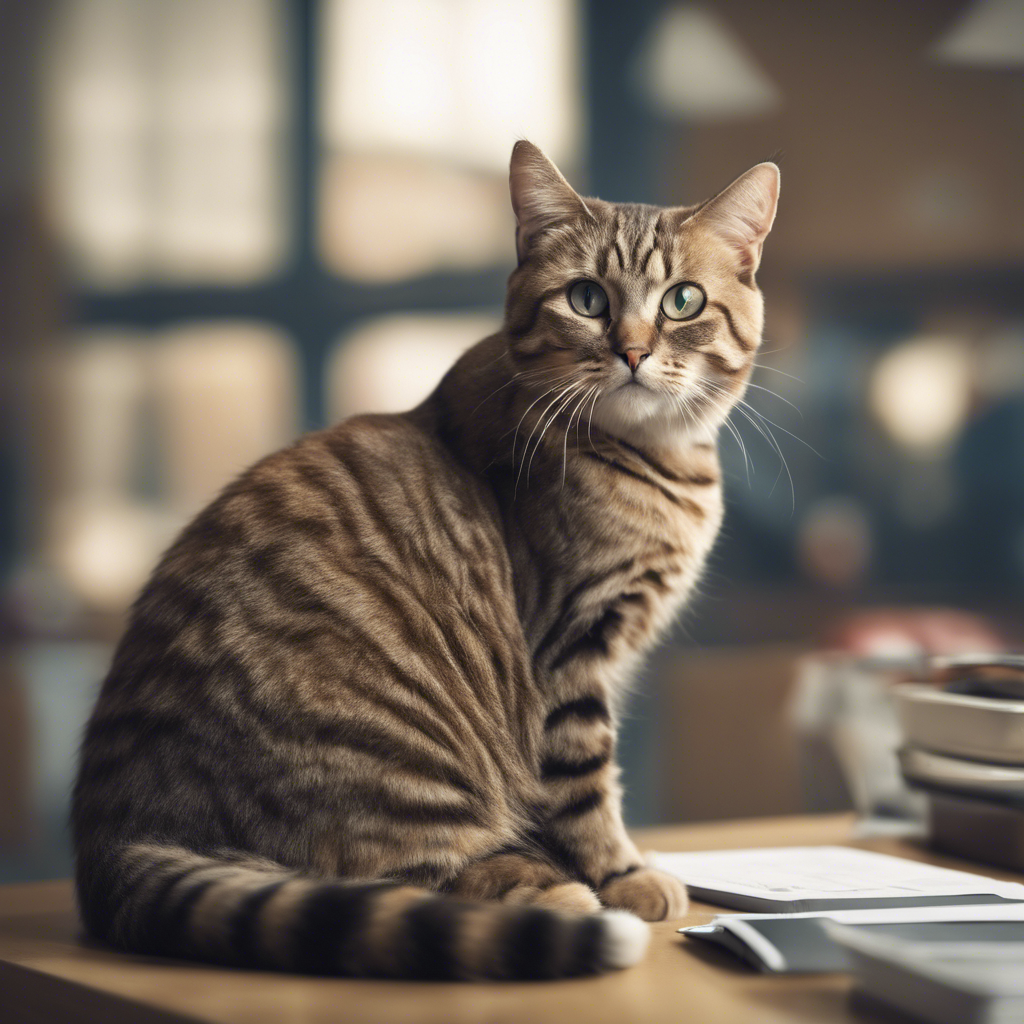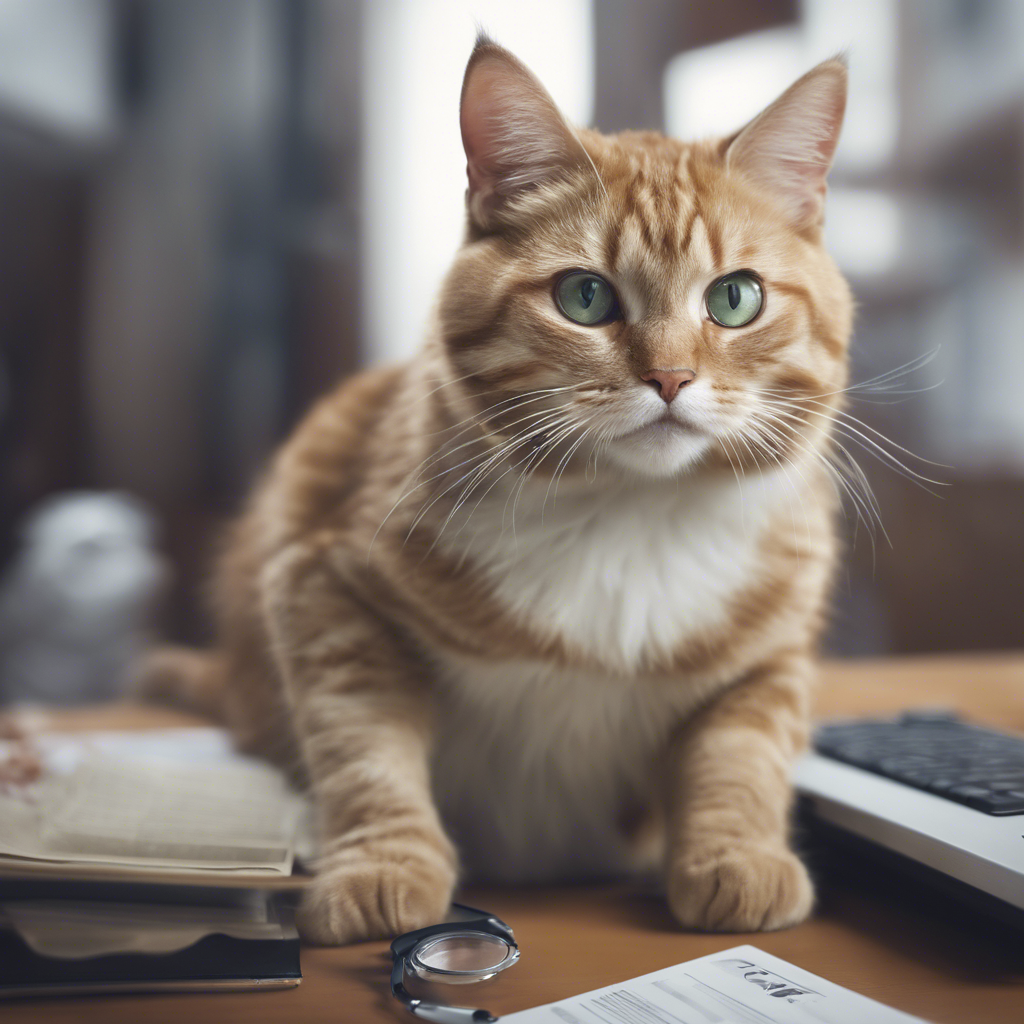Unraveling the Mysteries of FeLV
- Sarah Clawson
- Jul 2, 2024
- 4 min read
As a devoted cat owner, the joy and companionship our feline friends bring into our lives are immeasurable. However, amidst all the purrs and playful antics, it's essential to be aware of the lurking threats that some common cat diseases pose. Feline Leukemia Virus (FeLV) stands out as one of the foremost concerns, but there are several others that every cat owner should be familiar with.

The Shocking Encounter
I vividly remember the day when our cat Lola started showing unusual signs of fatigue, weight loss and loss of appetite. Lola was the most loving kitty that kept showing up on our porch, so we adopted her not knowing her history. As any caring pet owner would, I took her to the vet, where the diagnosis of FeLV shattered my world. She was given some medicine to be given at home, but not the greatest outcome. She died a week later. Working at a cat rescue, We have quite a few cats with FeLV and they are the most friendly and loving of all the cats. Unfortunately their time with us is not long enough. Seemingly they are fine one day and basically gone the next.
Understanding FeLV
Feline leukemia is a disease that only affects cats -- it cannot be transmitted to people, dogs, or other animals. FeLV is passed from one cat to another through saliva, blood, and to some extent, urine and feces. The virus does not live long outside the cat’s body -- probably just a few hours. Grooming and fighting seem to be the commonest ways for infection to spread. Kittens can contract the disease in utero or through an infected mother’s milk. The disease is often spread by apparently healthy cats, so even if a cat appears healthy, it may be infected and able to transmit the virus.
Symptoms
Signs of Feline Leukemia
The first signs of feline leukemia can look similar to other cat illnesses, like a cat cold or upset stomach. As time goes on, they'll worsen. The warning signs that the virus is attacking a cat's body include the following.
Most cats will show the signs of feline leukemia within a few weeks of being exposed to the virus, but some infected cats don't show symptoms for many years.
Weight Loss
Feline weight loss is common and can have many causes. Appetite changes in a cat are always a reason for concern, but in the case of FeLV, these changes in eating habits are often the first symptom.
Inflamed Mouth
In the early stages of feline leukemia, some cats develop stomatitis, where their gums become very inflamed and ulcerated. This can be really uncomfortable for the pet and lead to foul breath. A cat may also develop pale gums due to anemia.
Breathing Problems
It's easy to spot the warning signs of feline leukemia when the virus is settling in the chest. Your cat will develop coughing and other signs of respiratory problems. They may gag on the phlegm that is being produced. Wheezing and a runny nose or eyes are also very common.
Swollen Lymph Nodes
Many cats develop swollen lymph nodes. The most accessible ones for you to feel are in the neck. Just run your hands down the front of their neck on either side of the throat under their jaw.
Normal cat lymph nodes are about the size of a pea and are almost too small and soft to feel. If you feel anything firm or larger than a pea, it's likely the lymph nodes are swollen.
Stomach Problems
When the virus settles in the abdomen, your cat may experience signs of abdominal problems. There may be vomiting or frequent diarrhea, which is usually accompanied by a lack of appetite.
Weakness
With any virus, including FeLV, the immune system stops working, and your cat's overall health begins to deteriorate. They may show signs of listlessness, sleepiness, and overall weakness.
Persistent Infections
The leukemia virus puts cats at risk for infections, and these infections can be difficult to clear up. Infections of the bladder, respiratory system, and skin, among other systems, are common in these cats. They're often recurrent and chronic.
Fever
As the virus attacks the body, your cat may develop a fever. Cats naturally have a higher temperature than humans do, but if your cat feels excessively warm to the touch, it's a good idea to take their temperature with a pet thermometer.
Treatment for Feline Leukemia Virus
Eighty-five percent of cats persistently infected with feline leukemia virus die within three years of diagnosis. However, regular veterinary check-ups and good preventive health care can help keep these cats feeling well for some time and help protect them from secondary infection. Twice-yearly physical examinations, laboratory testing, and parasite control can prevent complications and identify problems quickly. All FeLV infected cats should be kept indoors and be neutered.

The Power of Prevention
Keeping your cat indoors and away from infected cats is a sure way to prevent them from contracting FeLV. In addition, vaccines can be given to cats at high risk of exposure, such as those who go outside or live in shelters or catteries. Only cats that test negative for FeLV should be vaccinated, and even those that have received the vaccine should be tested if there has been a possible exposure to the virus. The test should not be given before 30 days after the possible exposure. According to the American Association of Feline Practitioners, any cat that's sick should be tested. That's because there is a wide variety of health issues that can be associated with the virus.
New cats or kittens over eight weeks of age should be tested for the virus before being introduced to a multi-cat household. Most veterinarians counsel against introducing a new cat into a household with a FeLV-positive cat, because they may be at risk for contracting the infection – even with vaccination. In addition, the stress of a newcomer may adversely affect the FeLV-positive cat.
Stay Informed, Stay Empowered
As a casual reader and cat enthusiast, navigating through the complexities of common cat diseases can feel overwhelming. However, armed with knowledge and a proactive mindset, you can create a safe haven for your furry companion, shielding them from the invisible threats that lurk in the feline world.
May your cats purr in good health, and may your bond continue to flourish in the face of any challenge!



留言